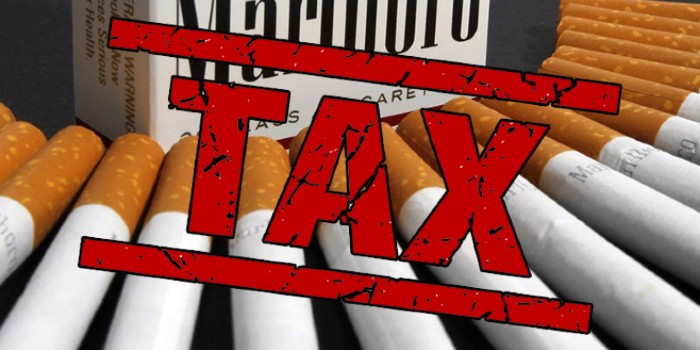Increasing tobacco taxes is one of the important measures that countries around the world have applied to reduce smoking rates, protect public health and increase revenue for the state budget.
Increasing tobacco taxes is one of the important measures that countries around the world have applied to reduce smoking rates, protect public health and increase revenue for the state budget.
International experience shows that increasing tobacco taxes not only helps reduce the rate of smoking but also contributes to raising public awareness of the harmful effects of tobacco.
 |
| Increasing tobacco taxes is one of the important measures that countries around the world have applied to reduce smoking rates, protect public health and increase revenue for the state budget. |
Australia is one of the pioneers in applying strong tax measures on tobacco. The Australian Government has implemented a policy of increasing tobacco tax annually in line with inflation, while strengthening propaganda campaigns about the harmful effects of tobacco.
Between 2010 and 2020, Australia implemented a series of tax increases of up to 12.5% each year. As a result, smoking rates in Australia have dropped sharply, from around 15.1% in 2013 to 11.6% in 2019.
Experience from Australia shows that sustained and planned increases in tobacco taxes over the long term can help reduce smoking rates, especially among low-income groups. Governments should also coordinateeducational campaigns and smoking cessation support to improve the effectiveness of this policy.
Japan has been a country with a high smoking rate for decades, but there have been major changes in tobacco tax policy in recent years.
One strategy Japan has adopted is to impose a tax on consumption, with higher taxes on tobacco products with higher levels of nicotine and tar. This policy encourages consumers to switch to less harmful products, such as e-cigarettes or reduced-harm cigarettes.
However, a major challenge in Japan is maintaining a balance between tax collection and preventing tobacco consumption, especially among low-income groups. The Japanese government has also implemented campaigns to raise awareness about the harmful effects of tobacco, combined with strong tax measures to reduce smoking rates in the community.
The UK is one of the countries with a coordinated strategy to reduce tobacco consumption. In addition to tax increases, the UK government also provides free smoking cessation support services to people, including counselling and nicotine replacement therapy.
Since 2007, the UK has steadily increased tobacco taxes, while investing heavily in campaigns such as the "Stoptober" campaign to encourage people to quit smoking.
The UK experience shows that a combination of tobacco taxes and cessation support can be more effective. Governments need to focus on changing people’s consumption habits, not just through taxes but also through health services and education.
In the United States, cigarette taxes are imposed at both the federal and state levels, with tax rates varying by state. States such as New York and California have increased cigarette taxes significantly, helping to reduce smoking rates over the years.
In addition, these states also use tobacco tax revenues to fund public health programs, including anti-smoking campaigns and cessation support services.
The US has also imposed a tax on e-cigarette products, aiming to reduce the rise of traditional cigarette alternatives, especially among young people.
Tax policies and anti-smoking strategies have helped the US achieve a sharp decline in smoking rates, from 42% in 1965 to less than 14% in 2020.
Thailand is a country with a relatively strict tobacco tax strategy, especially in controlling imported tobacco products.
The Thai government has increased tobacco taxes for many consecutive years and implemented a series of regulatory measures to reduce smoking rates. In addition to tax increases, Thailand also has strict regulations on tobacco advertising and a ban on smoking in public places.
Strong tax policies combined with advertising bans and incentives to avoid smoking in public spaces have helped reduce smoking rates in communities, especially among young people.
International experience shows that increasing tobacco taxes is an effective tool in reducing smoking rates and protecting public health.
However, to achieve optimal effectiveness, countries need to combine tax policies with educational strategies, smoking cessation support and advertising controls.
In particular, a gradual and flexible tax increase strategy is needed to avoid placing too great a burden on consumers, while maintaining the effectiveness of the tobacco consumption reduction strategy.
With lessons from successful countries such as Australia, Japan, the UK, the US and Thailand, developing countries can learn and apply measures suitable to their own actual situations.
Vietnam is one of the countries with the highest smoking rates in Southeast Asia, with about 45% of adult men and 1% of women smoking, according to recent surveys.
Reducing smoking rates and raising public awareness of the harmful effects of tobacco have become important issues in Vietnam's public health protection strategy.
In this context, applying international experiences in increasing tobacco taxes can help Vietnam achieve this goal effectively.
Source: https://baodautu.vn/cac-nuoc-tren-the-gioi-tang-thue-thuoc-la-the-nao-d232284.html



![[Photo] President Luong Cuong talks on the phone with South Korean President Lee Jae Myung](https://vphoto.vietnam.vn/thumb/1200x675/vietnam/resource/IMAGE/2025/6/13/eee54a4c903f49bda277272b1dda68e8)




























































































Comment (0)